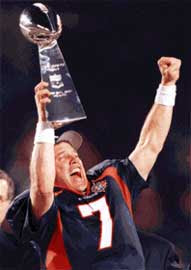In The Future...
Storytelling and interactivity: Your vision for the future of media. 100 years is too far away. What will we be interacting with in seven years?
The future will mean more control for the way comic book collectors and fantasy sports owners access and interact with their chosen hobbies.
Comic Books or Graphic Novels
 Collectors and enthusiasts in the year 2014 will have fully embraced the ever-evolving digital revolution by following the monthly adventures of Spider-Man, Batman and Harvey Pekar in a strictly online format.
Collectors and enthusiasts in the year 2014 will have fully embraced the ever-evolving digital revolution by following the monthly adventures of Spider-Man, Batman and Harvey Pekar in a strictly online format.Readers would stop buying books in a comic store and instead visit a supplier operating an online store hawking new comic books at cover price and discounted back issues. The reader would then download a digital file and save millions of tree acres each year. Perfect.
Readers can also visit specific comic publishers and download their books in a digital format. Navigational features would be added that would allow the panels to individually expand and fill the screen before retreating back into story with a single click.
The future would also bring a chance for the reader to serve as the artist. So you didn't like the story you just read? You hated the way Spider-Man removed his mask in front of a billion people on television? Then you could alter the events with a few mouse clicks.
Daring artists and publishers would also include free access to bonus files filled with character and background artwork for the reader to alter and recreate the story. The reader can be creative while understanding the artist's intentions with the story. The idea loosely follows the idea of "mash up".
Fantasy Sports
An estimated 20 million people maintain their own version of a professional sports "dream team" by participating in a fantasy sports league. Fantasy owners will spend hours research playing stats and trends in order to draft the players and maintain the best roster possible.The Canadian-based LiveHive Systems scored some headlines in January when it unveiled its NanoGaming baseball program at Fantasy Sports Trade Association's annual business conference. The company proclaimed its new service the future of fantasy sports. The program would allow people watching games to predict if the batter will get a hit, walk or strike out while competing against friends and strangers alike.
That is all good for right now, but the year 2014 will usher in a new era of control as owners will be able to watch and manage their team through detailed real-time statistics on their portable hand-held television device or computer.
 So say you have Roy Halladay, Derek Jeter and Jason Varitek on the same team. Well, you can see them all together wearing the uniforms you have designed through an interactive Web program. Your “dream team” would then play in a virtual baseball game you manage (setting the batting lineup and removing pitchers for starters.)
So say you have Roy Halladay, Derek Jeter and Jason Varitek on the same team. Well, you can see them all together wearing the uniforms you have designed through an interactive Web program. Your “dream team” would then play in a virtual baseball game you manage (setting the batting lineup and removing pitchers for starters.)























